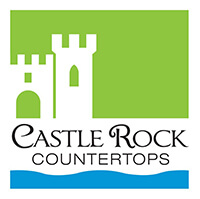FAQ
Q: What is granite?
A. Granite rocks are igneous rocks also known as “fire rocks” which were formed by slowly cooling pockets of magma that were trapped beneath the earth’s surface. Granite is the hardest of all building stones with a very close grain, making it almost impervious to stains and uniquely applicable for any interior use. If polished, its high-gloss finish will endure even in harsh environments. These characteristics are ideal for countertops and flooring making granite a reliable stone for these applications.
Q: Is granite right for me?
A. Granite can be manipulated in many ways to accommodate a multitude of applications – kitchen countertops, vanities, islands, bar tops, tabletops, backsplash, fire place surrounds and hearths and more. For most projects, granite is the preferred product of choice by many homeowners. “Money” magazine stated that one of the easiest ways to build equity into your home is by adding granite countertops. It is one of the best investments you can make. Please contact Castle Rock Granite Countertops, Inc. for a free consultation if you are unsure.
Q: Where is my granite from?
A. Granite is quarried all over the world, including Africa, Brazil, Egypt, India, Italy, Norway and Spain, to name a few. There are also some very lovely veins of granite mined in the United States and Canada as well. When you select your color, we will let you know where it is mined if you are interested in its origin.
Q: Does where my granite originates from affect the price?
A. Very little. Prices are more affected by the supply and demand placed upon the quarry and more importantly the access to and from the quarry. You’ll find that red and blue tones are a bit higher priced than other colors due to their lack of abundance.
Q: Do you offer any type of finished edges for granite?
A. Yes. Castle Rock Granite Countertops, Inc. offers many different edges and profiles for your new granite countertops. Five of the most popular edge treatments are included in your base price: flat polish or “pencil roll”, 1/2″ bevel, 5/8″ bevel, half demi and full demi. The flat polish edge profile maximizes the bold appearance and quality of the 3cm thick material. Other edge profiles are available for an extra charge – contact Castle Rock Granite Countertops, Inc. for availability and pricing.
Q: Will granite scratch?
A. Granite is one of the hardest surfaces available for countertop material. It would be extremely difficult to scratch the surface of a granite countertop from traditional every day use.
Q: Will granite stain?
A. Granite is a porous material by nature. However, the product is sealed on an annual basis which protects your investment from any staining or discoloration. The sealing process takes about 5 minutes for an average size kitchen. It is very easy and the homeowner only has to do it once per year.
Q: Do all granite kitchen countertops have a high gloss finish?
A. No, there are several different finishes you can order; the highly polished finish is just the most popular. There is a process called “honing” that gives the stone a more matte finish while it retains its smooth feel.
Q: Will I have visible seams?
A. Most granite installations will require at least one or more joints called “seams”. During layout and design, Castle Rock Granite Countertops, Inc. will always try to minimize the number of seams required in your granite countertops. Finally, Castle Rock Granite Countertops, Inc. installers are highly trained to color-match the joint filler material to minimize visible seams.
Q: Are there other granite colors available?
A. Yes, any granite color is available by request. Castle Rock Granite Countertops, Inc. maintains a full inventory of colors so that any project – large or small – can be fulfilled quickly from available inventory.
Q: I’ve heard of “high movement” stone. What is it?
A. Sometimes called “grain in the stone”, “movement” is veins that swirl and change irregularly in granite due to the massive forces at work on it beneath the surface of the earth during the eons it took to form. “Movement” is also affected by trace amounts of other minerals such as hornblende, magnetite, hematite, pyrite, zircon, garnet and corundum.
Many people find this flow of blending colors to be the most attractive and compelling quality about granite.
Q: What’s the difference between a drop-in sink and an undermount sink?
A. A drop-in or self-rimming sink sits on top of the cutout in your granite countertop while an undermount sink sits beneath the cutout. There is generally an extra polishing charge required in preparing a granite countertop for an undermount sink.
Q: Can you reconnect my electrical and plumbing connections?
A. As a granite fabricator, Castle Rock Granite Countertops, Inc. is not licensed as electricians or plumbers. Therefore, we cannot assume any liability for making electrical or plumbing connections. We can, however, recommend reputable and licensed individuals or companies to complete these tasks for you.
Q: Are there special cleaning requirements for granite?
A. Maintenance of granite surfaces is easy. For daily maintenance, a solution of clear, non-sudsing ammonia or a mild detergent and water is recommended. Care should be taken to make sure the detergent is non-acidic (no vinegar) and non-abrasive. Your new granite countertops should be sealed once a year. The process is very easy and takes only 3-5 minutes. Sealer and Cleaner can be purchased from Castle Rock Granite Countertops, Inc..
Q: How long does a kitchen remodel take?
A: Each project is unique, but for a rough estimate allowing for material production and lead time and all the phases of a remodel, you could be looking at four to six weeks, not including planning and designing.
Q: How much does kitchen remodeling cost?
A: On average, $21,680. But small projects are more along the lines of $10,000 to $15,000.
Q: How do I prepare for kitchen remodeling?
A: The most important thing to do is designate an area to be your kitchen “stand-in”. This way you won’t be stuck paying for expensive meals out during the reno. So, create an area where you can prepare food to the best of your ability. Aside from that, we’ve got it covered!
Q: How long does a bathroom remodel take?
A: If you don’t run into any bumps along the way, you can be look at roughly 23 days.
Q: How much does bathroom remodeling cost?
A: On average $9,381 but it could also be between $3,500 and $7,000 if it’s smaller scale.
Q: What comes first during bathroom remodeling?
A: For a full renovation, any demolition will start first, followed by plumbing and electrical. Cabinets and painting come next, followed by toilet installation, fixtures and flooring.
Q: Do I need permits to remodel a bathroom or kitchen?
A: Only if you are changing your home’s existing footprint, electrical system or plumbing.
Q: What types of countertop damage can be repaired?
A: All countertops can be repaired. Whether they’re ruptured, cracked, chipped, water damaged, or stained from chemicals or hot dishes.
Q: What counter materials can be repaired?
A: All of them, even chipped granite or quartz can be repaired. Concrete, butcher block, marble—we’ve fixed them all!
Q: Should I refinish or replace my countertops?
A: We recommend refinishing. You can update the look of your countertop for a low price. If you want a very big change though, you can go for replacing.
Q: What is the difference between cabinet resurfacing and refacing?
A: Resurfacing keeps the cabinet boxes, but replaces doors and decorative elements. Refacing simply means giving the visible surfaces a change with paint, stain, etc.
Q: How long does cabinet refacing last?
A: As long as you like! Refacing will last many years, until you decide you’d like a change, or there has been damage such as scratches or chipping that ruin the appearance.
Q: Which renovations give a return on investment?
A: Bathroom and kitchen renovations have the highest return on investment of any remodeling project. It can be between 80% and more than 100%!
Q: Why is remodeling so expensive?
A: When you remodel, you are upgrading and installing new updated appliances. Smaller renovations aren’t that pricey, but for larger ones it can be similar to building from the ground up. But consider the energy savings you will have down the road by having those updated appliances, as well as the monetary return should you choose to sell. Remodeling is a great investment!

Products
Contact
7416 Broadway Ext. Suite A
Oklahoma City, OK 73116
castillo@castlerockcountertops.com
(405) 819-0011
